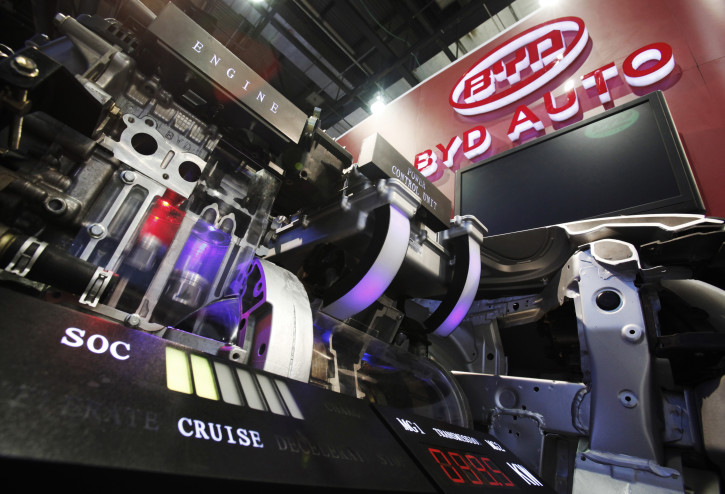
A new case study in the Paulson Papers on Investment series, California Dreaming: How a Chinese Battery Firm Began Making Electric Buses in America looks at the story of BYD Auto, the ambitious Shenzhen-based and Warren Buffett-backed automaker. The paper traces the company’s journey to the US and its ensuing challenges. Facing a difficult market for electric cars, the company turned to buses instead. A quick look at the company’s key milestones:
- Batteries to Cars: BYD (which stands for “Building Your Dreams”) was founded as a battery company in 1995, focusing on rechargeable batteries, demand for which was surging with the rise of personal electric devices. In 2003, the company purchased Shaanxi Qinchuan Auto Company, inheriting a passenger vehicle manufacturing production license and transitioning from a battery firm to an auto company that specialized in electric vehicles. EVs had strong government support, as new-energy vehicles were declared one of seven “strategic emerging industries (SEIs)” in China’s 12th Five-Year-Plan.
- Eyes on the US: In 2008, BYD made its US debut at the Detroit Auto Show and the same year won a 10% investment stake from Warren Buffett. Bolstered by this positive attention and momentum, the company started making moves to establish a US headquarters and sell passenger cars. By 2011, BYD was breaking ground on its Los Angeles office.
- Unexpected Challenges: It wasn’t long before BYD was facing the challenges of the US market: unfamiliar US regulations and permitting processes, and a difficult market landscape for consumer EVs. Instead of giving up, BYD repositioned itself to focus on fleet sales – specifically for electric public buses, which required a targeted focus on fleet managers who had high purchasing power, less concern for brand image and an interest in the cost-savings of EVs.
- US Direct Investment: There was one major consideration with this business model pivot: BYD was now attempting to sell into a sector that was bound by new “Buy America” provisions. So the company looked into a greenfield manufacturing option and eventually set up two production plants in Lancaster, CA, 70 miles from downtown LA, in 2013. Yet more challenges followed, largely stemming from bad publicity related to the buses’ safety tests and alleged labor violations against the company.
- Looking ahead: Despite the challenges, BYD learned, adapted and persisted in the US market. Lancaster’s surrounding area will soon be the first public transit system in the United States to use BYD’s “Made in America” electric buses, and LA Metro is also signed up. Soon the cities of Chicago and New York will count BYD cars in their taxi fleets. Finally, BYD hopes that soon it will have the brand and quality recognition to expand into its original target: the EV consumer market.


